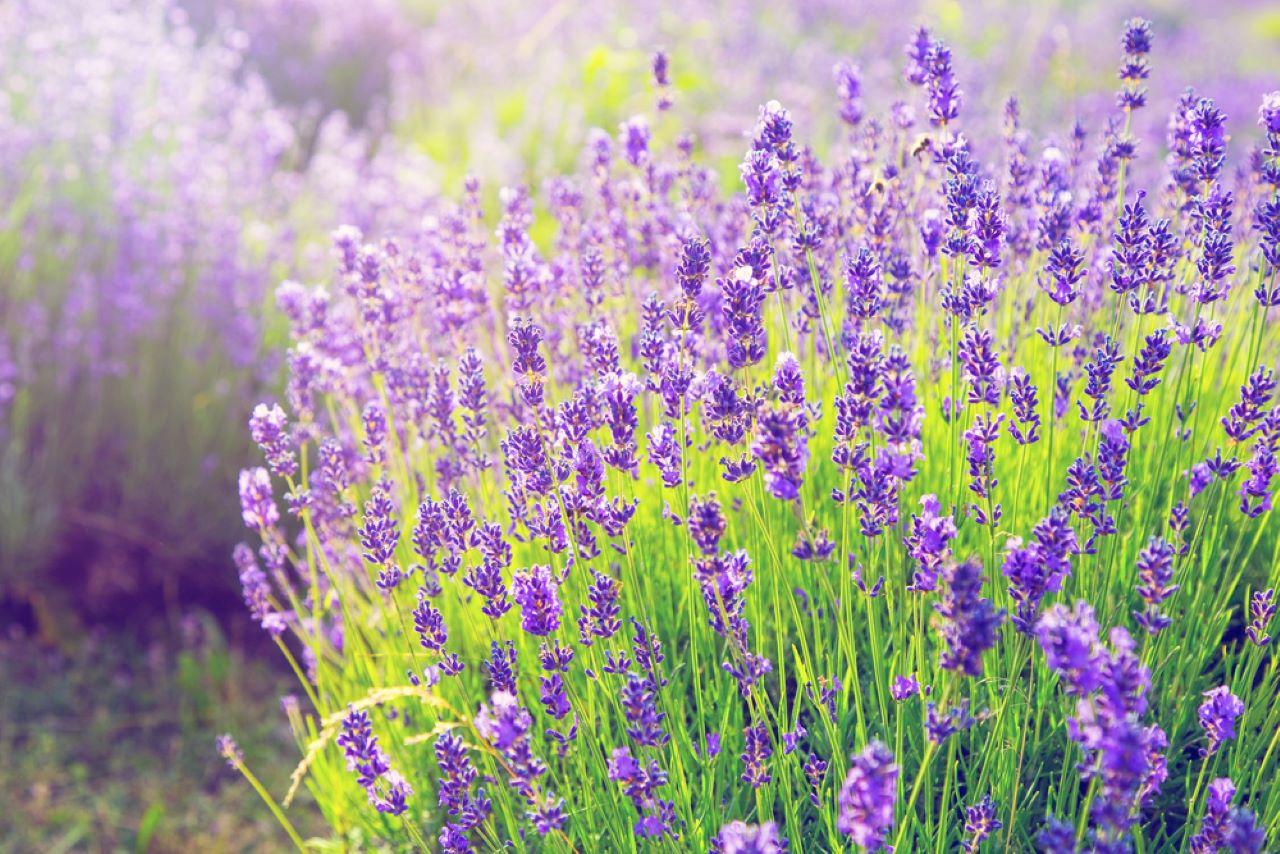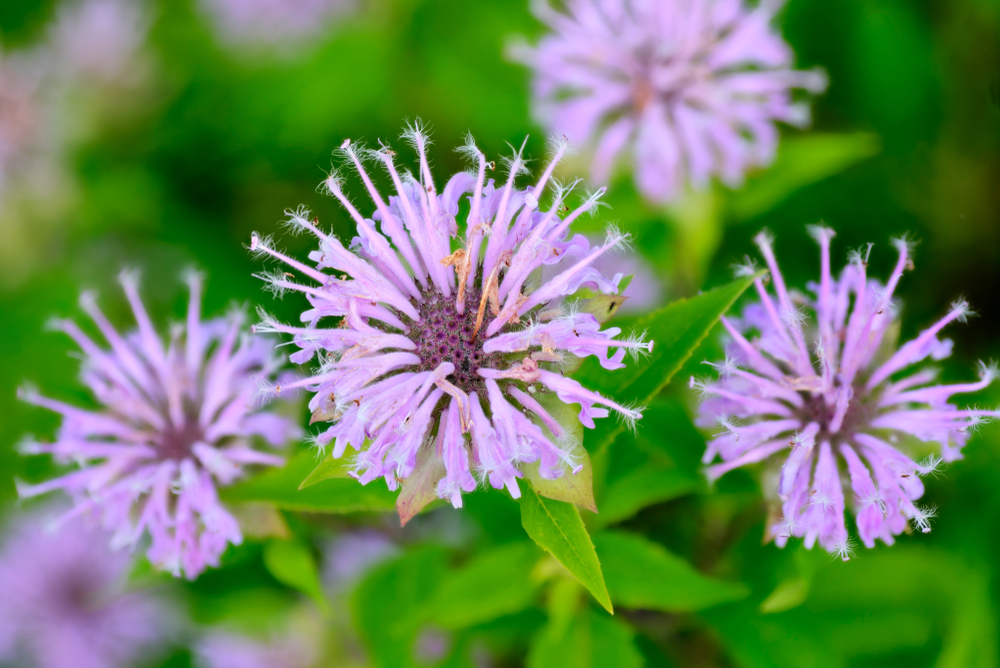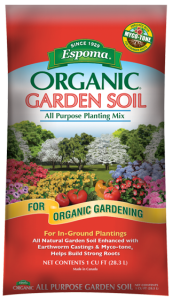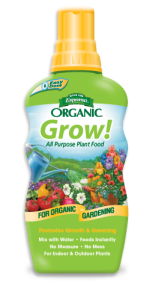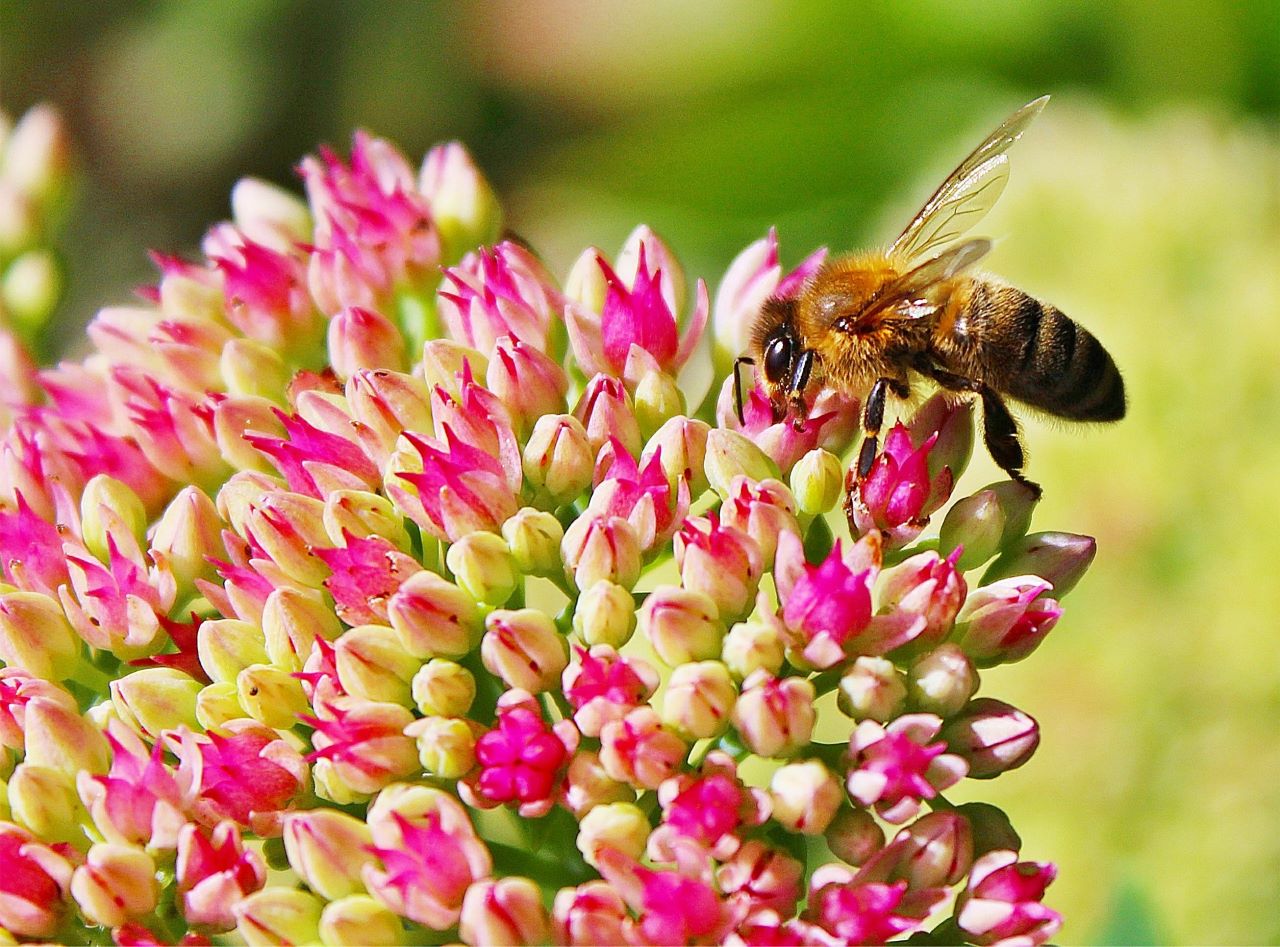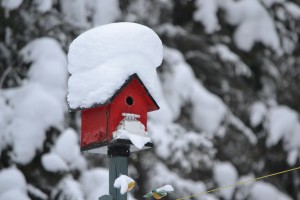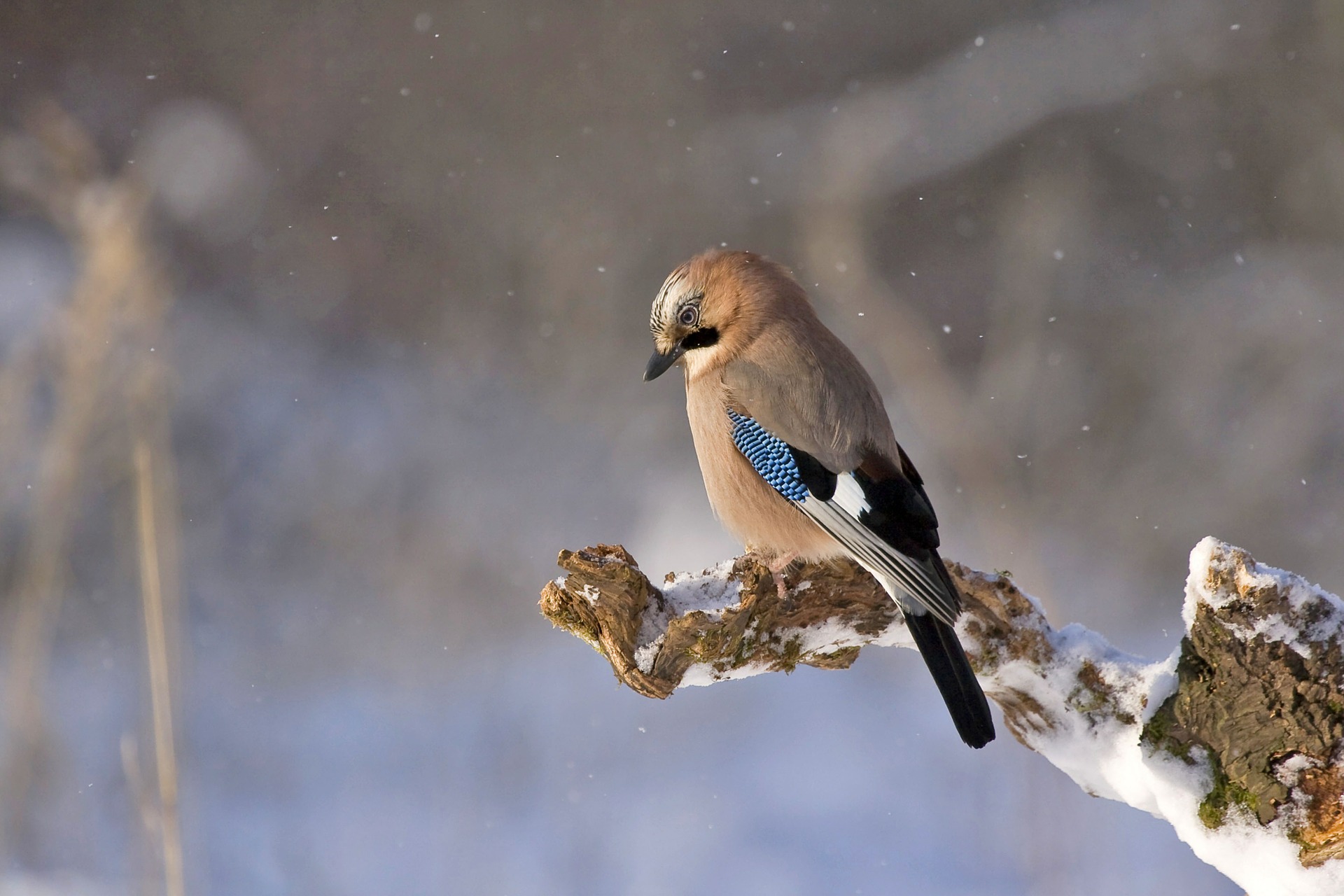Tag Archive for: garden for pollinators
VIDEO: Buzzing with Joy Over Summer Rayne Oakes’ Pollination Garden.
/in Blog, Fruits & Vegetables - NoneVariety is the key to pollination, and Summer Rayne Oakes has it down tenfold with over 160 species of plants in her garden at Flock Finger Lakes. Want to know what really makes it buzz? Espoma Organic Bio-tone Starter Plus, of course!
Learn more about Flock Finger Lakes here:
Website: homesteadbrooklyn.com
Instagram – @homesteadbrooklyn
YouTube – Summer Rayne Oakes
Twitter – @sroakes
Facebook – Summer Rayne Oakes
Featured Products:
Let’s Build a Butterfly Garden 🦋
/in FlowersWhat’s better than decorating your home with summer bouquets of flowers directly from your garden? Having a cut flower garden is not only convenient for on-demand bouquets, but also for adding color to your garden with stunning oranges, yellows, purples, pinks, and blues. While you often choose plants for bees, these flowers are for butterflies.
Pollinators need love year-round, and that starts with gardening organically. In honor of National Pollinators Month, here are our best tips for celebrating by building a butterfly bouquet with the flowers they love!
Breathtaking Flowers Butterflies Will Love
Yarrow (Achillea)
Yarrow is a vibrant yellow perennial. It has a lengthy flowering time from June through September. It is a relatively tall flower with an average growth height of 2.5-3 feet. Butterflies love these flowers because they’re easy to land on and also loaded with sweet nectar. Give your flowers a strong soil base to help them thrive through the hot summer months with Espoma’s Organic Garden Soil. Best suited for zones 3-8.
Ox-Eye Daisies
Ox-Eye Daisies are a classic addition to your garden. Their flowering time covers the summer months from May to August. With their white rays and yellow centers, they will be sure to brighten up your cut flower garden. They grow 1-3 feet tall so they will not take up too much space. Butterflies love Ox-Eye Daisies because they are nectar-rich. Best suited for zones 3-8.
English Lavender
English Lavender is a garden essential! Their flowering period covers the summer months of June to August. They grow to the perfect height of 1.5-2 feet. People and butterflies love English Lavender for its fragrance and remarkable blue-purple color… Best suited for zones 5-8.
Blanket Flower (Gaillardia)
The Blanket Flower is a vivid, color-rich butterfly flower to add to your garden. They flower in summer months from May through August. Blanket Flowers tend to be on the shorter side, only growing 6-12 inches tall. Their stunning blood-orange red petals and yellow tips will have your jaw on the floor by the time flowering season rolls around. Butterflies cannot pass up the nectar and vivid colors on these stunning flowers. In order to get the biggest flowers, fertilize with Espoma’s Bloom! liquid plant food. Best suited for zones 3-10.
Bee Balm
Bee balm is another pollinator favorite that should earn a spot in your pollinator garden. The Bee Balm’s flowering period only covers July through August, but their violet blue, red, pink, or white color will be worth it. They thrive in zones 4-8 and are relatively tall, growing an average of 2-3 feet. Bee balm is nectar-rich and its bright coloring makes it an easy sell to butterflies. Boost your Bee Balm with Espoma’s Organic Flower-tone fertilizer for big, healthy flowers. Best suited for zones 4-8.
Featured Products:
Purple Please – Top Purple Plants for Your Garden
/in FlowersEvery year gardeners want to expand their gardens to offer new colors and plants to make it fresh.
This year, Ultra Violet is the color on trend, so we looked for the best purple plants to include. We created this list of a variety of flowers, foliage and pollinators to fit any need. Plus they all smell divine.
When planning to plant, start your new plants off right with Espoma’s Organic Bio-Tone Starter Plus plant food plus mycorrhizae.
Top 5 Purple Plants
- Lavender
Not only is lavender a beautiful purple shade, but it has a strong fragrance that helps to alleviate stress. Lavender, with its attractive foliage, purple flowers and scent is the symbol of summer which is a must for every garden. Bloom time is from June to August.
- Verbena
Clusters of little purple flowers top the stems of this beautiful plant. Verbena is drought tolerant, so it fits into any climate. Bunched together this plant can pack a punch of color. Bloom time is from summer through fall.
- East Friesland Salvia
This plant shines purple through and through. This salvia plant is popular for the long spikes of purple flowers that bloom in the summer and fall. It is a pollinator plant, attracting everything from bees to hummingbirds.
- Heliotrope
Perfect for containers near your entryways, Heliotrope is known for its vanilla fragrant flowers. It is a wonderful treat for summer, especially when paired with lemongrass and lavender. These purple flowers are small and dense, but should not be overlooked. Bloom time is summer through fall.
- Purple Bee Balm
While the most popular varieties of bee balm is red, there are some beautiful selections that bring purple flowers. They are easy to grow and will bloom from summer through fall. It is a great pollinator plant, loved by hummingbirds and bees.
For even more options, head to your local garden center to see what plants work well for your area.
Once your new plants are established, feed regularly with Espoma’s Organic Grow! liquid fertilizer. It gives them the boost they need to have bright colors and vibrant blooms.
Espoma products in this blog:
Help Local Pollinators Survive the Winter
/in FlowersOctober has arrived and with it comes fall flavors. Pumpkin spice pops up practically wherever you go. And there’s nothing like a freshly picked apple or glass of apple cider.
Pollinators know it‘s fall too and they could use some help from your garden. This time of year is known as nectar flow, where many major nectar sources are blooming. They want their own fall fixes as they prepare to hibernate or migrate.
You’ve probably added perennials and trees to your garden for pollinators, now add fall flowers to bring pollinators to your garden.
6 Fall Blooming Plants for Pollinators
Aster
All kinds of pollinators are attracted to this fall-blooming plant — bees, butterflies, native birds, and other insects. This double-duty plant will bring vibrant colors to your garden while providing nectar from summer into late fall. Asters are appealing to pollinators due to their friendly flower structure. They grow 2-3 feet tall in zones 4-9 and are happy in both sun and partial shade.
Goldenrod
The fall color scape isn’t complete without the goldenrod’s vibrant color. This easy-to-grow plant brings butterflies and bees to your garden. Being a native to North America, it will adapt to the climate it is set in. They grow 2-3 feet tall in zones 4-9 and are happy in sun or partial shade. Pollinator Tip: Goldenrods do well when paired with Asters.
Purpletop Vervain
Bring the fall colors to your garden with this deep purple plant. The flowers cluster at the top of a long slender stem, which butterflies and bees adore. Purpletop Vervain responds better to late fall sowing as it likes cold temperatures. They grow 2-4 feet tall in zones 7-11 and are happy in full sun.
Joe Pye Weed
Joe Pye Weed is perfect for gardeners looking to add some height. It may be called a weed, but it brings the classic fall mauve to play with large dinner plate-sized blooms. They are loved by butterflies and will bloom late summer into the fall. They can grow up to 5 feet tall in zones 4-9 and are happy in full sun.
Autumn Joy Sedum
If you know the classic sedum for the large pink blooms, you will be in for a surprise with Autumn Joy. This variety offers burnt red blossoms on top of tall gray-green stalks. The vibrant fall color complements your garden this season. Butterflies are a frequent visitor to this plant. It will last through the fall, until the flowers dry in the winter. They grow 2 feet tall in zones 3-9 and are happy in full sun.
Bugbane
Known for being a dramatic addition to any garden, Bugbane is popular among gardeners. Bugbane is a host plant and source of nectar for butterflies. On top of long stalks, wispy white flower spikes bring sweet smells. Other fall colors are offered in various varieties of this plant. They grow up to 6 feet tall with 12-18 inch spikes of color in zones 3-9 and are happy with partial sun to full shade.
We recommend planting with Espoma Organic Bio-tone Starter Plus to help give your new plants the essential nutrients they need to establish in their new environment. Be sure to keep fall blooms big and vibrant with Espoma’s Grow! Liquid Plant Food.
Featured Products:
Plant Perennials for Easy Curb Appeal
/in FlowersSummer is a great time to spruce things up, giving you the chance to make your home feel warm and welcoming.
If you want to add curb appeal or if your yard just seems a bit bare, plant perennials that will come back year after year. Look for them in many different colors, heights, and forms.
Before planting, evaluate your space for the amount of sun and shade it gets. Check to make sure the perennials you’re selecting will thrive in your space.
Here are our top six picks for the prettiest perennials.
The Best Perennials For Summer Curb Appeal:
1. Hydrangeas. There are endless options of these bright bloomers to choose from. Pick a spot where hydrangeas will get afternoon sun and be sure to water daily. For bright blue hydrangeas, you’ll need to perfect the soil’s pH level. Use Espoma’s Soil Acidifier for best results. Zones 4-9.
2. Black-eyed Susan. Black-eyed Susan blooms from midsummer to fall and always makes a strong comeback in spring. This vigorous bloomer is also a favorite of pollinators. These flowers grow best in full sun, but will tolerate partial sun as well. Zones 3-9.
3. Aster. The lovely pink or lavender blooms attract a wide range of late-season butterflies and beneficial insects. Position purple asters against a white picket fence or light colored background for a look that pops. Zone 4-8.
4. Daylillies. Daylilies are just as hardy as they are colorful. Blooming from early spring to late summer, these perennials make the perfect border or road-side addition. Since soil near roads and walkways tends to be in need of a boost, make sure to plant with Espoma’s liquid plant foods.
5. Hostas. Choose Hostas for their never-ending display of colorful summer foliage. You’ll find these perennials at your local garden center in a wide variety of colors, shapes and patterns. Plant under trees, near shrubs, or near your home. Hostas prefer shade, but some varieties do well in sun. Zones 3-9.
6. Sedum. One of the most dependable perennials you can grow, varieties of sedum will quickly establish themselves in any sunny spot. These creeping ground covers and low-maintenance plants will also attract pollinators. Zones 3-9.
Once you’ve chosen your perennials, all that’s left to do is plant. To get your best perennials yet, use Espoma’s new liquid Bloom! plant food.
3 Ways to Celebrate National Pollinator Week
/in Blog, FlowersNational Pollinator Week is a time to give bees, birds, and bats a little recognition. Pollinators, such as bees and butterflies, play a big part in getting our gardens to grow. Honeybees are directly responsible for pollinating one third of the food we eat. They help fertilize flowers, carrying pollen from one plant to another in exchange for food.
This week, we’re helping to educate people on the purposes these pollinators serve. Keep reading for three ways to celebrate pollinators in your garden.
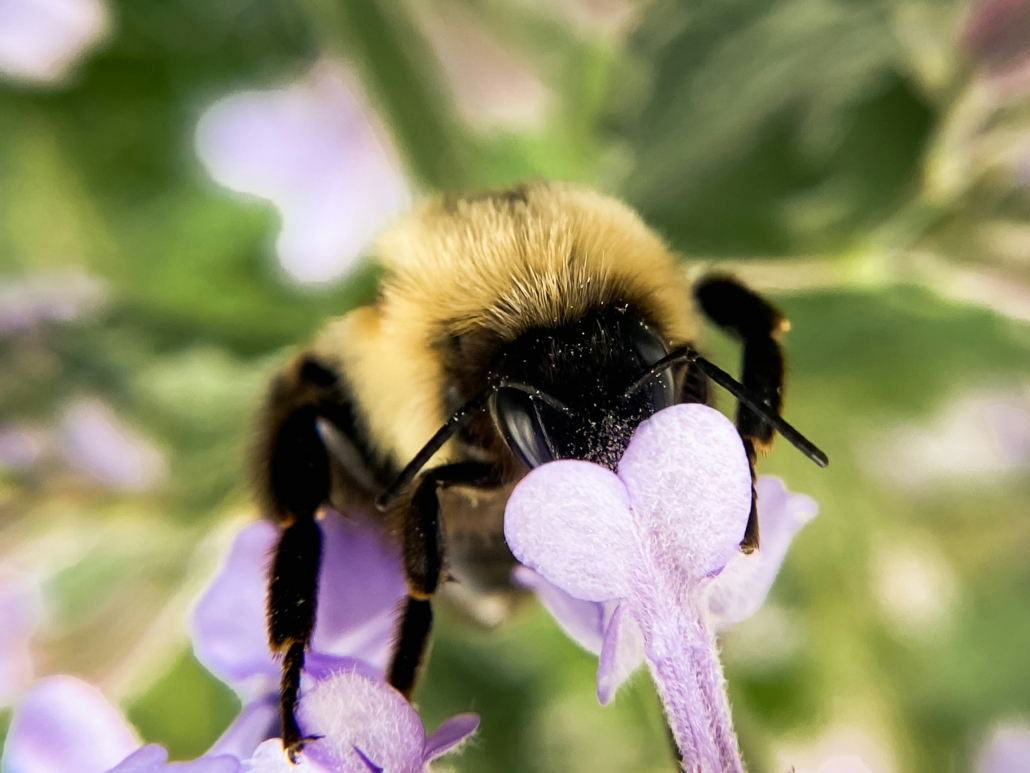
1. Plant a Pollinator-friendly Garden
To keep your garden beautiful, you can attract pollinators by planting flowers that appeal to them. Try adding native plants to an existing garden or creating a whole new garden specifically for pollinators. Choose plants that bloom at different times throughout the year, providing long-term food and shelter. Follow this simple formula. Plant tall flowers 18-20” apart, medium flowers 12” apart and short flowers 8-10” apart and then use Espoma’s Bloom! liquid plant food regularly for a boost.

Pollinators especially love these flowering plants:
- Allium
- Alyssum
- Basil
- Bee balm
- Bergamot
- Cosmos
- Geranium
- Globe thistle
- Goldenrod
- Helianthus
- Lavender
- Mint
- Poppy
- Rosemary
- Sage
- Sunflower
- Thyme
- Verbena
- Wild rose
- Zinnia

2. Build a Bee Hotel
Solitary bees, bees that live alone and not in hives, need a place to make their nests. Welcome these gentle bees to your garden by adding a bee hotel. Solitary bees don’t make honey and rarely sting. Females lay their eggs inside a small hollow tube and then they patch the door with mud. DIY or purchase a bee hotel at your local independent garden center to encourage pollinators to check-in to your garden.

3. Increase Feather Pollinator Population
Insects aren’t the only pollinators around town. Hummingbirds are also great pollinators. Build a Hummingbird feeder in your yard to encourage our furry friends to stop by. Ask kids to help building a feeder that will attract these polite birds. The plants that are pollinated by Hummingbirds tend to produce more nectar than plants pollinated by insects, so penciling in some time to create a feeder will pay off in the long run.
*****
Check out these Breathtaking flowers butterflies will love!
Featured Products:

Pollinators: Nothing to Sneeze At
/in FlowersDid you know that honeybees are directly responsible for pollinating one third of the food we eat?
Pollinators, such as bees and butterflies, play a big part in getting our gardens to grow. They help fertilize flowers, carrying pollen from one plant to another. In return, pollinators only ask for food — the nectar and pollen from flowers they visit.
Lately, pollinator populations are declining. Thankfully, you can still “bee” an ally for pollinators by creating habitats for them in your own garden.
A garden frequented by pollinators is both healthy and beautiful. Give pollinators what they need and you’ll watch your whole garden bloom livelier than ever.
How to Keep Your Garden Beautiful and Attract Pollinators:
Location. The best way to attract pollinators is to plant flowers that appeal to them. Either add to an existing garden or designate one specifically for pollinators. Choose a sunny location and remove weeds from the plant beds.
Layer. Entice pollinators with native flowering plants that bloom at different times throughout the year, provide food and habitat. Include several types of flowers that produce nectar and sticky pollen.
At the back of your garden, plant tall flowers such as coneflowers, sunflowers, black-eyed Susans and asters. Their petals provide landing platforms for pollinators. In front of the tall flowers, plant medium flowers, like catmint and yarrow. In front of those, plant shorter flowers such as verbena, or herbs that flower, like oregano.
Planting. Plant tall flowers 18-20” apart, medium flowers 12” apart and short flowers 8-10” apart.
Sprinkle flowers with Plant-tone, an organic plant food that won’t harm any visitors to your garden. Or, try our new Grow! organic liquid plant food to quick-start your plants’ growth.
Now that your garden is set up to welcome pollinators, wait for the flowers to bloom!
Share pictures of your pollinator habitat with us on our Facebook page!
Bird’s the Word in Winter. Help Feed Them
/in GardeningInstead of looking out at a still landscape all winter, infuse your yard with movement. During winter, birds are scavenging for food, looking for a place to take it easy for a while.
While you’re keeping your pets safe in winter, don’t forget about feathered friends. Feed birds this winter, and they’ll happily visit your yard and put on a show — complete with a song and dance! Keep
Chirp, Chirp! Cheap, Easy Ways to Attract Birds to Garden
Start winter bird feeding to attract birds to the garden. With this trick, you can garden for pollinators all year long!
1. Garland in the Garden. If you have leftover popcorn and cranberry garland from Christmas, string it outside for the birds. None leftover? Make it!
2. Field the Feeder. Add a large-capacity feeder or multiple feeders, so you only have to refill weekly. Place in a spot where you can see the feeder that also has a tree or shrub about 10’ away.
3. Seed to Succeed. DIY a bird seed mix to avoid fillers in bagged birdseed that go uneaten. This way you can attract your favorite birds, too!
• Suet, fruit and peanuts – the ultimate bird party starter. All birds love these!
• Black-oil sunflower seeds – the easy to please seed that cardinals, woodpeckers, blue jays, goldfinches, finches, chickadees, titmice and nuthatches eat. Plus, these deter squirrels and raccoons.
• Thistle seeds – Goldfinches simply love thistle seeds! Only use in thistle feeders.
• Safflower seeds – cardinals, chickadees, titmice and downy woodpeckers snack on safflower. Squirrels don’t like them either!
• White millet – cheap to buy and charming to sparrows, juncos and mourning doves.
4. Fill to Thrill. Birds may be slow to find your feeders. Once they do, they’re counting on you. Make sure your feeder is always full, or birds will find a more reliable feeder!
Once you see the first bird enjoying your feeder, you’ll be happy as a lark! A lively, song-filled winter awaits!





